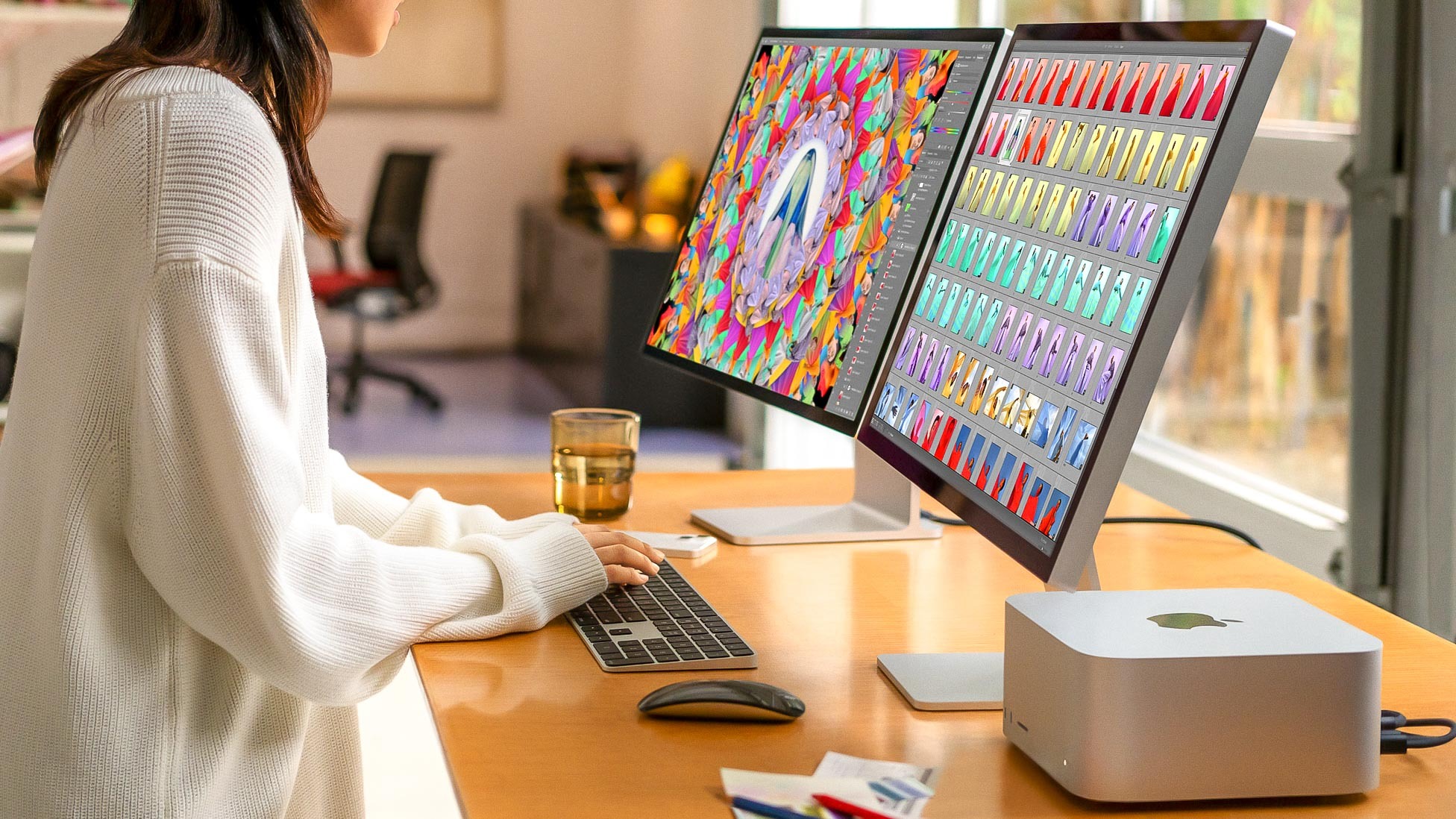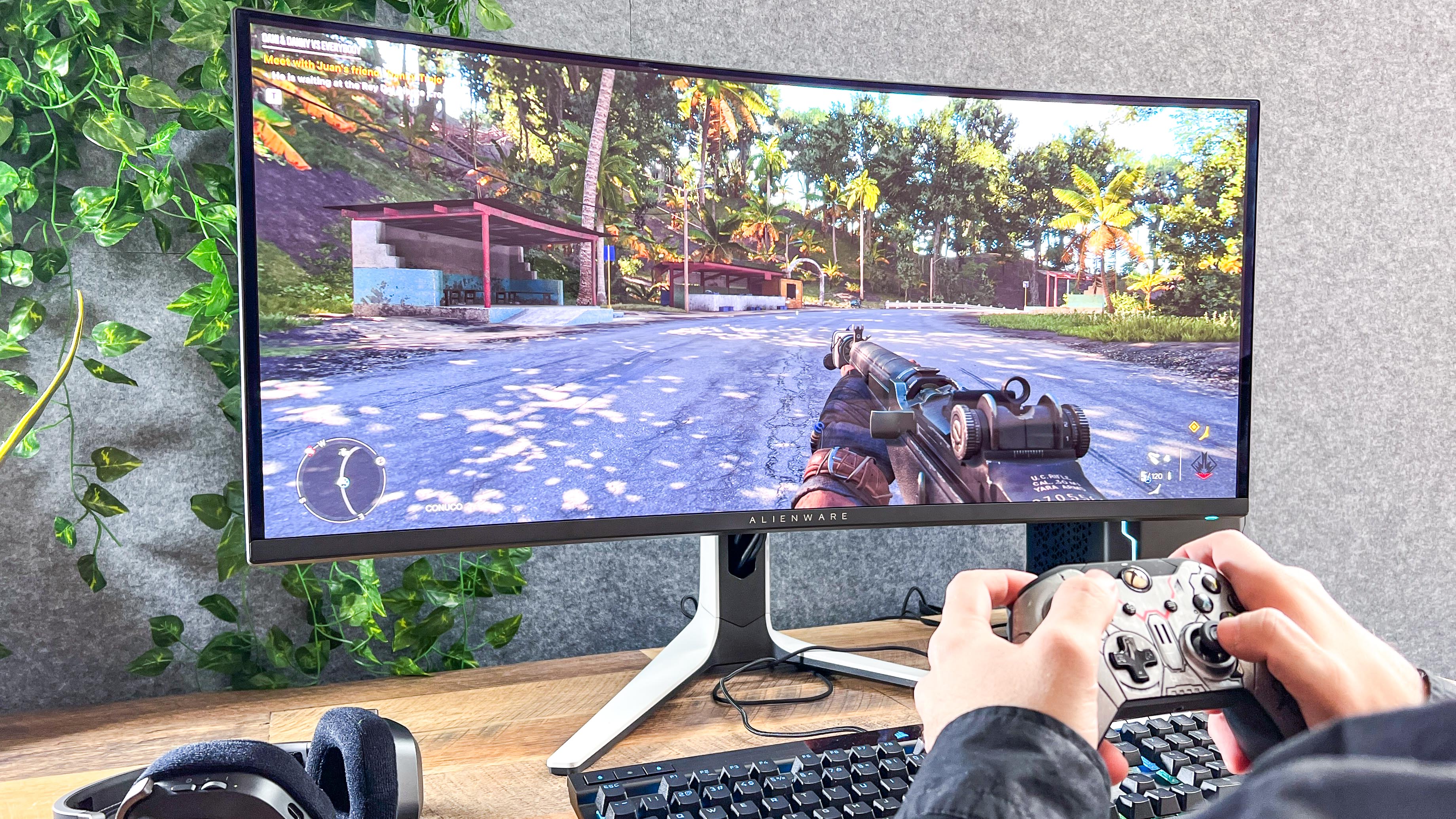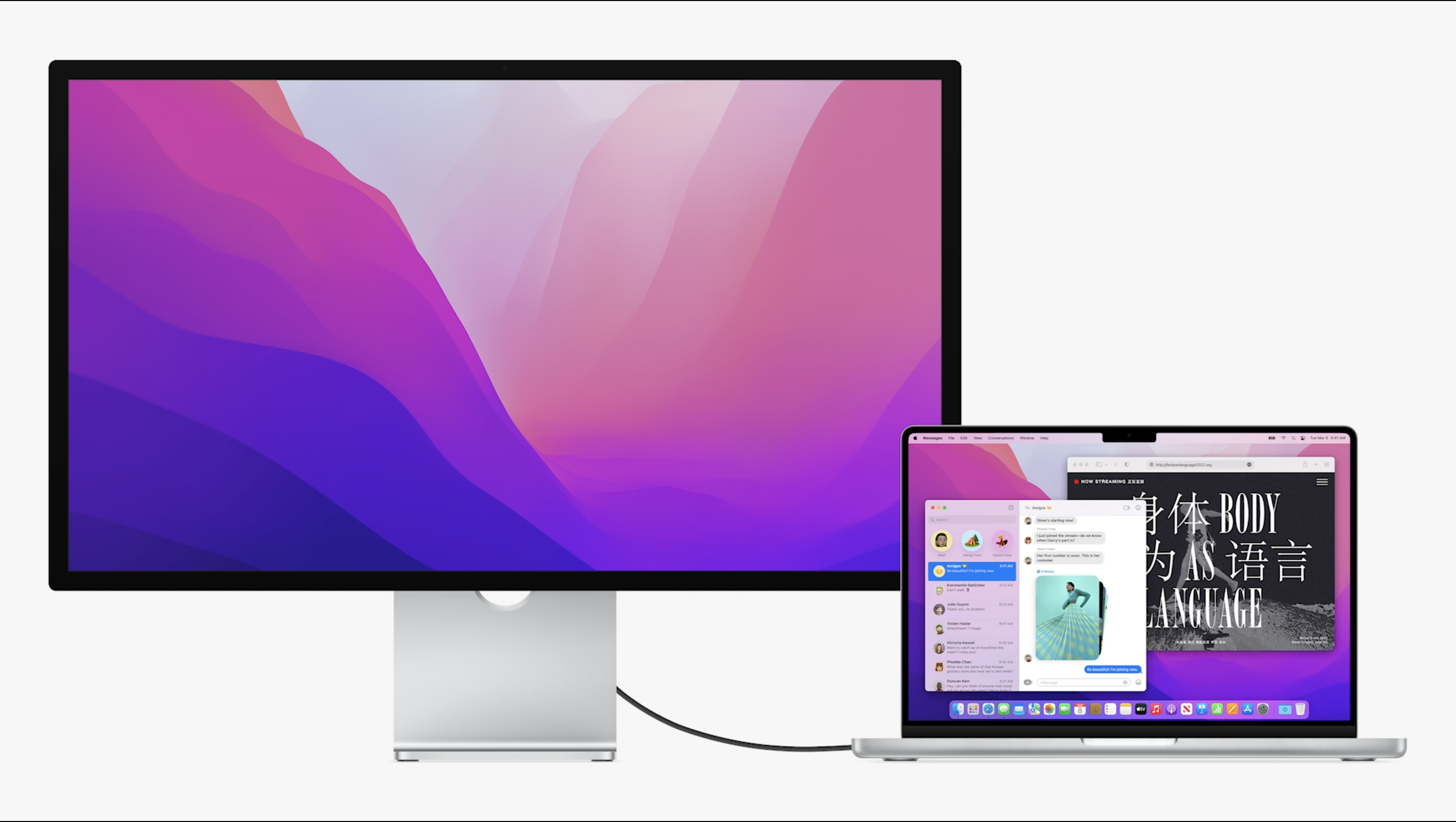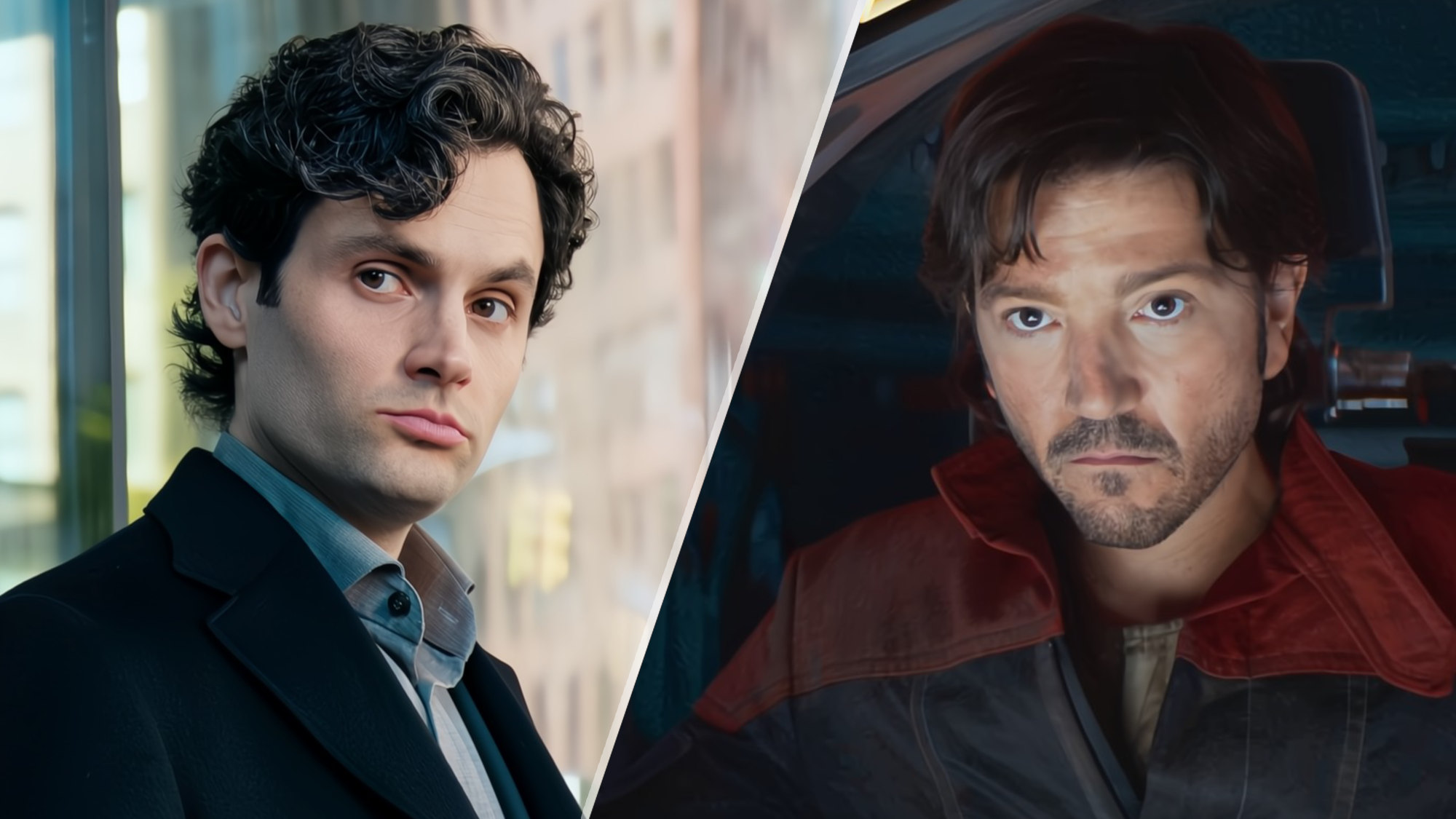Apple's Studio Display looks like a great monitor — unless you're on Windows
I want the Apple Cinema Display, but my PC's telling me no

Update: Dell's latest monitor has a 4K HDR webcam that could give the Apple Studio Display a run for its money
The Apple Studio Display was unveiled last week during the Apple's March 2022 press event, and ever since I've been wondering: is this the first Apple display I buy?
I know I'm not alone, because this is the first display Apple is selling in a long while that costs less than $5,000, and that means there's a whole new category of Apple fan who can finally countenance spending (still quite a lot of) money on a monitor designed by the Cupertino-based company.
Until recently, if you wanted an Apple monitor you were stuck pinching pennies to try and afford the Pro Display XDR, a gorgeous 32-inch 6K display that starts at $4,999. No matter how great it is (and it is pretty great, as we discovered after using a Pro Display XDR for a month) that price tag instantly relegates it to the realm of the professionals and the obscenely wealthy.
The new 27-inch, 5K Studio Display is quite a bit cheaper by comparison, as its price tag starts at $1,599. That's still not cheap, to be clear: You can buy a lot of great 27-inch monitors for less. However, you can't buy an Apple monitor for less, and even the best monitors on the market can't match one of the Studio Display's most intriguing features: an onboard A13 Bionic chip that helps out with image processing, Siri, and more.
This is the same chip that powers the excellent iPhone 11 Pro Max and iPad 2021, and in the Studio Display it supports features like Center Stage (which automatically tracks and keeps you centered in frame if you move around in front of the monitor's ultrawide camera), spatial audio and Siri.
I was initially quite excited about the prospect of an Apple display with a built-in A13. I don't own any Mac hardware, but I have spent a significant amount of time with the company's latest MacBooks and tablets, and I can always count on them to have sharp, eye-catching displays. I need a new monitor (or two) for my PC, and I'd love a beautiful 5K display that offers some of the cool, unique features of Apple devices while also working seamlessly with my Windows PC.
As I discovered after a little research, the Studio Display can't quite meet my needs on that front. While it's an exciting monitor option for Mac users and likely one of the best monitors for MacBook Pro owners seeking an external display, Apple's Studio Display struggles to match the features of similarly priced displays when connected to a Windows PC. So if you were hoping to take full advantage of a monitor with built-in speakers, webcam and microphone on your Windows machine, you might be better off with something like the Samsung Smart Monitor M8.
Apple Studio Display: What you get
Before we get into nitty-gritty comparisons, let's quickly go over what you get with an Apple Studio Display. Available for pre-order now ahead of its March 18 release date, the $1,599 Studio Display is a 27-inch 5K (5,120 x 2,280 pixels) display with a 60Hz refresh rate and a 12MP ultrawide webcam. It comes with a stand that allows you to tilt the display forward or backward up to 30 degrees, or you can get it with a VESA mount adapter instead.

For $300 more you can get a Studio Display with nano-texture glass (which is designed to be less reflective), and for an additional $400 you can get one with a better stand that lets you adjust both tilt and height. That last part is key for setting up the Studio Display in an ergonomic fashion. I wish Apple would start affording every customer the freedom to adjust the height of their display, but at least you can get that option with a Studio Display, which is more than I can say about last year's 24-inch iMac.
Specs-wise, the Studio Display is (according to Apple) capable of displaying 14.7 million pixels at up to 600 nits of brightness. With features like True Tone (which adjusts the display based on ambient light), support for the P3 color gamut, and a slew of reference modes, this is a display aimed squarely at content creators and editors who prize color accuracy.

It has a built-in 12MP ultra-wide webcam that supports Center Stage (the first time Center Stage has ever been available outside of an iPad), a six-speaker sound system that supports spatial audio and a triple-mic array that (thanks to the afore-mentioned A13 chip) can passively listen for Siri requests.
There are four ports on the back of the display: one Thunderbolt 3/USB-C port for hooking up your computer, and three USB-C ports for connecting additional peripherals to said computer via the display. Personally I prefer to connect my monitors via DisplayPort when possible, but for the promise of Apple's Studio Display I was willing to compromise. Unfortunately, the other compromises I'd have to make in order to hook my Windows PC up to a Studio Display were too much to bear.
Apple Studio Display vs. similarly priced monitors
The thought of putting all the Studio Display's features to use on a Windows PC is intriguing, but unfortunately many (including Center Stage and Siri) don't work unless you hook it up to a Mac. Without them, we're effectively evaluating a 27-inch 5K display that costs upwards of $1.5k, and you can get a lot of monitor for that much money.
Obviously the Studio Display isn't aimed at game enthusiasts, so as disappointing as it is that Apple's latest monitor can't achieve refresh rates higher than 60Hz, it makes sense. That said, displays with high refresh rates are ideal for playing fast-paced games (since they can display more than 60 frames per second), and you can get an excellent 4K 27-inch gaming monitor with a better refresh rate for less than you'll spend on a Studio Display.
The Asus ROG Strix XG27UQ is just such a monitor, delivering all that and a 144Hz refresh rate for $800. Heck, you can get one of the best gaming monitors we've ever seen, the gorgeous 34-inch 4K curved Alienware 34 QD-OLED, for hundreds of dollars less than a Studio Display, despite the fact that the Alienware display is bigger and sports a QD-OLED screen capable of achieving up to a 175Hz refresh rate.

But the Studio Display is designed chiefly for photo/video pros who prize features like color accuracy, so let's quickly look at what kind of pro-grade monitors you can get for the same price. Acer PEO Series PRoDesigner PE320QK is a great example: This 32-inch 4K monitor is also aimed primarily at designers, creators and editors, so it comes factory calibrated with wide color gamut support, lots of reference modes for different color spaces, and an anti-glare display with a built-in display hood which tents up above the monitor to further cut down on reflections. It remains an excellent 4K display for pros, and its asking price is half that of Apple's Studio Display.

Of course, Apple's display offers 5K resolution, which is still rare in the PC monitor market. That said, the MSI Prestige PS341WU is a 5K 34-inch monitor that looks quite good, and you can get one for $999. Sure, it's only 60Hz and doesn't support HDR, but neither does the Studio Display.
Outlook
We can't say for sure how well Apple's newest monitor performs until we get a Studio Display in for review. However, even a cursory comparison against what's available in the monitor market makes it clear that the Studio Display struggles to justify its remarkably high price tag — unless you're a Mac user.
For Mac owners, the Studio Display looks to be a great monitor with a handful of cool features, albeit for quite a lot of money. The 12MP webcam aided by the built-in A13 chip should help you look great on video calls, and the six-speaker setup ought to kick out some pretty rich sound. It's also compatible with the latest iPad Air 5 and 2021 iPad Pros, making the Display that much more enticing if you already own one of those tablets.
But for the rest of us, Apple's Studio Display seems too expensive for what you get — and deeply handicapped without a Mac behind the wheel.
Sign up to get the BEST of Tom's Guide direct to your inbox.
Get instant access to breaking news, the hottest reviews, great deals and helpful tips.

Alex Wawro is a lifelong tech and games enthusiast with more than a decade of experience covering both for outlets like Game Developer, Black Hat, and PC World magazine. A lifelong PC builder, he currently serves as a senior editor at Tom's Guide covering all things computing, from laptops and desktops to keyboards and mice.
